
7 Books to Read in Honor of the 30th Anniversary of the ADA
July 26, 2020, marks the 30th anniversary of the signing of the Americans with Disabilities Act by George H.W. Bush. According to ADA.gov, it is “one of America’s most comprehensive pieces of civil rights legislation that prohibits discrimination and guarantees that people with disabilities have the same opportunities as everyone else to participate in the mainstream of American life.” It was modeled after the Civil Rights Act of 1964 and Section 504 of the 1973 Rehabilitation Act. At its core, it is an “equal opportunity” law for disabled individuals. It was a good start, but even today, there is much work to be done regarding accessibility and equity, as well as how disability itself is viewed. The New York Times recently published a piece that featured first-person mini-essays by Alice Wong, Haben Girma, and Judith Heumann, and they highlighted just how much work there is still to do.
I know there is a tendency for people (usually non-disabled people) to use person-first language, i.e. “person with a disability.” However, in the disability community, many (here and here, for instance) have spoken up and prefer identity-first language, i.e. “D/disabled person.” This is because disability is not something negative and should not be treated as such—it should not be seen as something to be separated from the person. I defer to the disability community, and in general, will always ask a person what kind of language they prefer or use. For the purpose of this piece, I am using identity-first.
To learn more about Section 504 and the ADA, the documentary Crip Camp on Netflix is an amazing resource.
To celebrate the 30th anniversary of the ADA, here are some book suggestions (all but one are #OwnVoices). For more posts with great books to add to your TBR, check out these #OwnVoices audiobooks and this roundup of books by disabled authors.
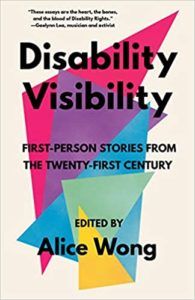 Disability Visibility: First-Person Stories From the Twenty-First Century by Alice Wong
Disability Visibility: First-Person Stories From the Twenty-First Century by Alice Wong
This book. I cannot say enough how much I love it. As I was reading it, I kept having to stop to think about each essay and let the words wash over me again. The essays take many formats: eulogies, speeches, blog posts, Congressional testimonies, and traditional essays—and this adds to the reading experience. The stories are about everyday living, activism, community, and love. Contributors include Stacey Milbern, the Harriet Tubman Collective, and both Haben Girma and Keah Brown, whose own books you’ll find below.
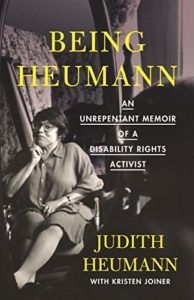 Being Heumann: An Unrepentant Memoir of a Disability Rights Activist by Judith Heumann with Kristen Joiner
Being Heumann: An Unrepentant Memoir of a Disability Rights Activist by Judith Heumann with Kristen Joiner
Judith Heumann is a main focus of the Crip Camp documentary, and she was a leader during the fight for Section 504 and the Section 504 Sit-In. This memoir details her life and activism after polio caused paralysis when she was 18 months old. The education system denied her basic educational rights, and then when she became a teacher, the NYC school system denied her a teaching license because of her paralysis (which she fought in court, and won). One of the major figures in the disability rights movement, her work laid the groundwork for and helped to eventually create the ADA. Smart, unapologetic, and funny, this book reads like a conversation with Heumann, and the only regret I have with this book is that it wasn’t longer.
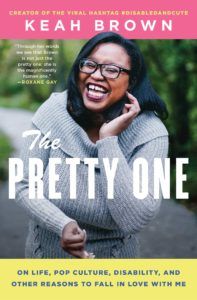 The Pretty One: On Life, Pop Culture, Disability, and Other Reasons to Fall in Love with Me by Keah Brown
The Pretty One: On Life, Pop Culture, Disability, and Other Reasons to Fall in Love with Me by Keah Brown
Brown, the creator of the hashtag campaign #DisabledAndCute, is a fantastic writer. These essays about love, pop culture, family, dating, and disability made me laugh, but they also made me think deeply—about language, media representation, and more. She writes about being a Black disabled woman in a “mostly able-bodied white America.” She breaks down the media stereotypes and portrayals of disability, and she’s sharply observant with a wicked sense of humor. I underlined and annotated the heck out of this book. When I was finished, I wanted to be her best friend and also give a copy of this to everyone I knew.
 Care Work: Dreaming Disability Justice by Leah Lakshmi Piepzna-Samarasinha
Care Work: Dreaming Disability Justice by Leah Lakshmi Piepzna-Samarasinha
This essay collection focuses on disability justice, which is a movement in disability rights that centers the lives and experiences of QTBIPOC (queer, trans, Black, Indigenous, and People of Color) individuals. These essays are like mini-manifestos, passionate and explosive in the best possible ways, thought-provoking and necessary. They are about self-care, accessibility, radical community, and effecting change. This book should be required reading for everyone.
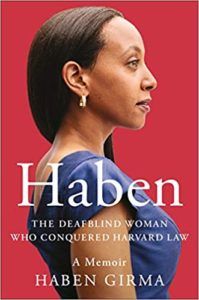 Haben: The Deafblind Woman Who Conquered Harvard Law by Haben Girma
Haben: The Deafblind Woman Who Conquered Harvard Law by Haben Girma
I first “met” Haben during the virtual Crip Camp lecture/activism series, and then I found her book. She is the first Deafblind graduate of Harvard law school, and this is her memoir. Her parents are from Eritrea, and she used to spend her summers there with them. Their refugee story sparked a desire in her to learn and travel. She writes about creating modifications and accommodations for her disabilities, and how all of her experiences have shaped her in a variety of ways. This is a gorgeous memoir of adventure and travel, of family, and forging one’s way through life.
 Sitting Pretty: The View From my Ordinary Resilient Disabled Body by Rebekah Taussig (August 25)
Sitting Pretty: The View From my Ordinary Resilient Disabled Body by Rebekah Taussig (August 25)
I was lucky enough to get an ARC of this book, and cannot say enough about it. It’s a memoir-in-essays, and it’s a little like having your own private conversation with Taussig. Growing up paralyzed in the ’90s and 2000s, Taussig saw disability portrayed as something bad or as inspiration porn—and nothing reflected her own lived experience. She explores this in these essays, along with observations about life in a body that is outside the parameters of an ableist society. She writes about dating, falling in love, working, feminism, womanhood, and intimacy, and how all of this is so rarely portrayed in the real and complex ways they coexist with disability.
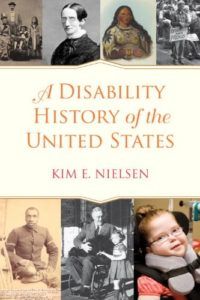 A Disability History of the United States by Kim E. Nielsen
A Disability History of the United States by Kim E. Nielsen
There is so much of U.S. history that we aren’t taught in schools, and the Revisioning History series is a great way to help start fill in those gaps. This book in the series focuses on disability history, from pre-1942 to present day. In this book, disabled people are the focus of the narrative, using primary sources and social histories. It’s a fascinating look at U.S. history and one that is long overdue.

